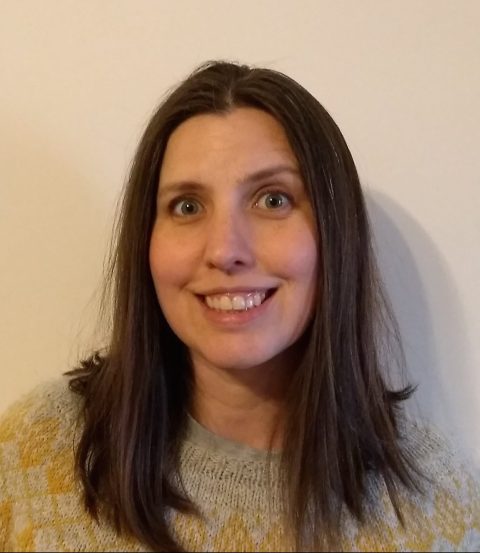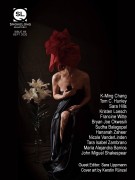In Maurice Sendak’s children’s book Where the Wild Things Are, the main character, Max, takes a journey into the land of “wild things” after being punished. He escapes to this imaginary world, dances with the wild animals and is made their king. He eventually returns to reality and his parents. Sendak’s book can be used as an example of how children deal with their anger and emotions. The escape to imaginary worlds is similar in your flash and Sendak’s children’s book.
However, there are differences in where your story’s children return to after their imaginary journeys. Your children are escaping a perpetually bad situation while Max was just angry with his parents. Where did you find the inspirations for your story and its characters?
I love that comparison with Sendak. Isn’t it fascinating how children use their imaginations as a coping mechanism? Perhaps it’s what makes them so resilient. I remember losing myself in play as a child—hours spent choosing a “better” future out of a thick Sears catalog, not so different from these children with their picture atlas.
When I first conceived this story, I imagined the children exploring an online map, but it didn’t fit their level of poverty and I wanted it to be more timeless. I wanted to limit their options as well, so the computer light became a flashlight, and their world shrank into a dark pocket of fear, hunger, and poverty. When I was really small, we hid from the landlord when the rent was due, and so in part, I was calling upon that distant memory and spinning it out into a worse scenario.
Even in the very difficult situation you present, there are subtle moments of tenderness like the instructions on blocking out the situation with imaginary journeys and the need to provide for the children. How did you decide to make the mother character more empathetic?
Mothers are tricky. I wanted to explore the idea that mothers will do whatever it takes to provide for and protect their children, but sometimes there are hidden costs. In earlier versions, I struggled to make the mother open to interpretation, to both still be on a pedestal for her children and yet completely visible to the reader. I think not naming her true profession was the key to that, as well as highlighting her state of desperation—the hunger, the abuse she suffers, her attempt to keep the children safely locked away from harm.
In many ways, the daughter takes on the mothering role in the story, which is very common in difficult family situations. I get really worked up over child neglect issues, and in order to sleep at night, I needed the youngest child to feel taken care of. To have that hope of sugar cereal in the morning and that imagined future of song and fish.
Speak to the significance of the title: Why lions?
The line about lions was consistent in every version of this story. I imagined one pouncing from the shadows, and my critical voice informed me that they don’t exist in the Amazon. But I liked that contrast of something unexpected that didn’t fit, that felt off-kilter, so I kept it.
I’m personally terrified of being attacked by a lion, or any large cat. Maybe I’ve watched too many nature documentaries, but they’re absolutely brutal and unpredictable animals. It felt like the perfect embodiment of what was happening in that house; the sense of danger and masculinity. I think it also contributed to the mother’s vulnerability, and thereby her children’s as well.
Just as with the mother’s empathetic details, you use a subtle hand in illuminating the story. How did you decide what to tell in surreal or imaginary details and what to present in harsher, real terms? How did you decide on details with an unreliable child narrator?
While writing, I was remembering living in an old flat in Switzerland with thin floors. The neighbors would regularly wake my children up with their loud ‘sessions,’ and I would have to explain away the sounds. For over a year, my children were convinced there were birds and monkeys living downstairs—an entire menagerie by the time we moved out.
I wanted to explore how the sounds the story children hear might combine with the pictures in the atlas. How the danger of the moment translates into their imaginations—and when you’re a child, what’s more frightening than wild animals, biting fish, ghosts, guns, and cannibals? As a child, I was particularly frightened by the idea of cannibals; I didn’t want to be eaten. Maybe this also explains my fear of large cats.
In that same vein, how did you decide to integrate fortune telling? Was that a coping mechanism for the child narrator?
My great grandmother Helen was into fortune telling. Depending on who you ask, she read cards or tea leaves. I’m obsessed with the idea of fortune telling, both as a con and for the power it has to change people’s behavior. And in this story, it served as the perfect guise for the mother’s profession. I wanted her to work from home, and I was reminded of driving around the U.S. one summer with a friend and stopping at a palm reader’s house. It was so rundown and sketchy that I immediately assumed more than fortunes were being read there.
While the children in this story don’t yet know the truth about their mother’s profession, the daughter is right on the verge of figuring it out. We can imagine what’s coming and what dangers might befall these children and their mother. I love that by spinning out the possibilities and our sense of dread, we, as the readers, become the real fortune tellers here.



 The SmokeLong Grand Micro Contest (The Mikey) is now an annual competition celebrating and compensating the best micro fiction and nonfiction online.
The SmokeLong Grand Micro Contest (The Mikey) is now an annual competition celebrating and compensating the best micro fiction and nonfiction online.